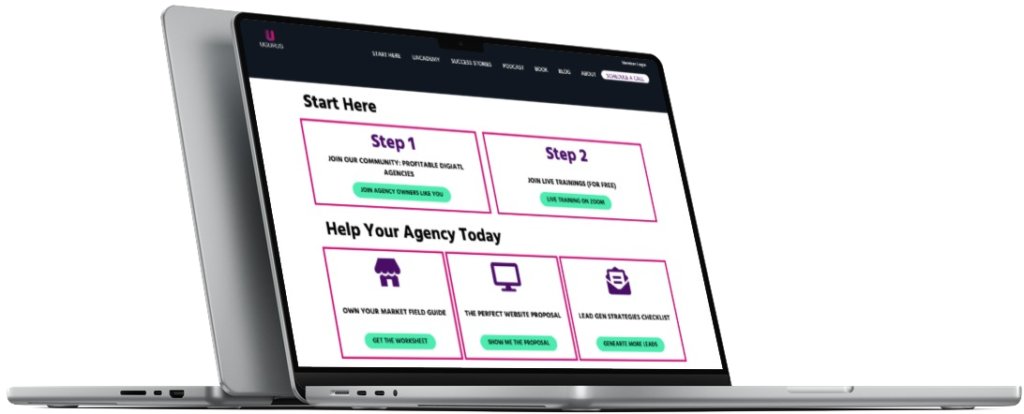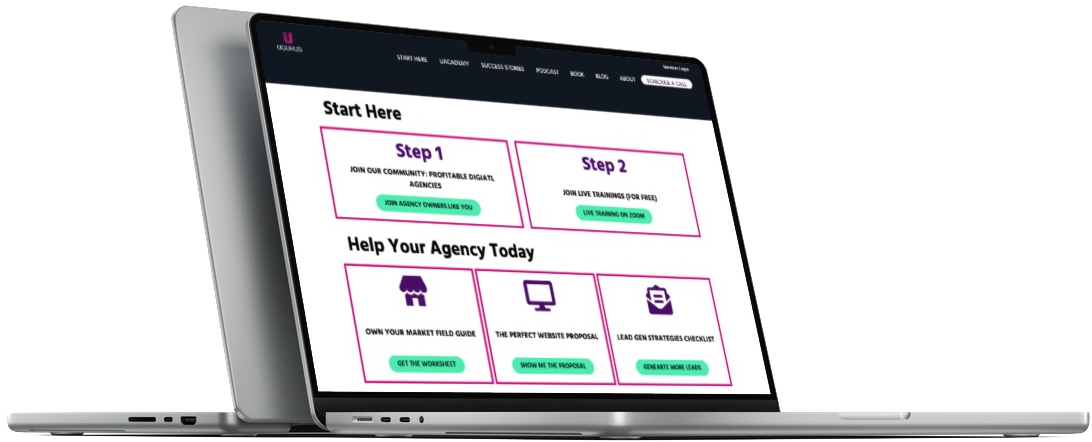You’re likely familiar with being part of an audience. Maybe (before the pandemic) you’ve been in the crowd at a concert, gone to a conference, or sat in church and heard a sermon. But for now, I want you to forget what it feels like when you’re “out there.”
Instead, visualize the other view at a big event—the one where you’re looking from the stage at the many people in front of you. Think of them patiently waiting to get some value: inspiration, motivation, knowledge, or experience.
That’s your audience—the first A in the 5-A Framework—and they’re ready for you.
How to Think About Your Audience
In order to identify your market and know where to look for your ideal clients, we must be abundantly clear about who they are. And to get down to finding out who they are and figuring out what they look like, let’s split the market up into four different levels. Each is related to your audience as a whole:
- Primary Audience
- Secondary Audience(s)
- Customer Segment
- Ideal Customer
Your Primary Audience
Your primary audience is a broad group of people. (Or it should be, anyway.) This is your main market—or niche—that you want to serve and should be made up of thousands of prospective clients.
You don’t define who they are, nor should you. Your primary audience already exists—and all you’re doing when you identify one is acknowledging that it’s partly made up of the people you want to sell to.
If you tell people that you work with this market, they should easily know whether or not they belong or know someone who does (so they can refer you, of course). As an example: Colorado lawyers. You may not want to sell to all Colorado lawyers. You might, in fact, only want to approach a small subset of that audience. Regardless, by identifying your primary audience, you’ll be able to identify several specific awareness channels you can use to reach them.
Your Secondary Audience(s)
Secondary audiences are usually larger groups of people that contain a subset of your primary audience. You can’t define them either—like your primary audience, secondary audiences already exist whether you want them to or not.
What’s a secondary audience? Here’s an example. If your primary audience is Colorado lawyers, “business attorneys in the United States” might be a secondary audience. Some percentage of all US business attorneys practice in the state of Colorado.
Not all business attorneys in the US are Colorado lawyers, obviously, and not all Colorado lawyers are business attorneys. Still, by speaking to US business attorneys, you’ll be able to target a certain number of Colorado lawyers. Bingo: “business attorneys in the US” is a secondary audience.
Secondary audiences are essential because you’ll likely find that your market won’t be organized into one neat group you can target. Maybe your primary audience is too small, and you need to look more broadly. Or perhaps your primary audience is actually made up of several broader secondary audiences.
Either way, identifying secondary audiences is an integral part of marketing to the people you want to reach.
Interestingly, as you seek publishers, influencers, and trade groups, you’ll often find that they’re a secondary audience as well. In other words, some percentage of their own following is made up of the people you want to reach. (File this away for later because I’ll come back to it.)

Learn more about owning your market in my new book, Get Rich in the Deep End, available for pre-order here.
Your Customer Segment
Your customer segment is the spectrum of ideal buyers within your primary audience and secondary audiences. A customer segment is a “target.” That means the further away from your segment you get, the less of a fit a prospect will be for your business.
And unlike your primary and secondary audiences, you do get to define your customer segment—usually by a combination of demographic, geographic, and psychographic constraints. For example, law firms with over $1 million in annual billings based in Colorado that are frustrated with their website.
Your Ideal Customer
Once you have a grip on what your customer segment looks like, then it’s time to zero in on an individual in that segment. This is your “ideal customer.”
I highly recommend you identify one. Because when you’re creating content and messaging for your business, speaking to “everyone” is a bad strategy. If you try to talk to everyone, you’ll wind up talking to no one.
However, it can be difficult to remind yourself to talk to a single individual. That’s why I recommend using a tool called a “customer avatar” to help create a fictitious example of our ideal customer.
By thinking of this “person” who has real qualities that you can humanize, a customer avatar can help you get more specific in your messaging and marketing.
Here’s an example: John is a business attorney who lives in Wash Park in Denver, CO. He’s married with two kids and enjoys waking up early to get a run in before heading into his law practice for the day. He just became an associate partner. He’s looking for new ways to help his practice grow to make more money and impress the more senior partners.
Your ideal customer is a Colorado lawyer who works at a firm with at least $1 million in billings. But when you think of him as “John,” your marketing becomes much more human. It’s easier to write to John than it is to “Colorado lawyers,” isn’t it?
Do You Know Who Your Audience Is Yet?
Well, there’s still more that goes into identifying your audience as part of the 5-A Framework, so no worries if you’re still scratching your head. I’ll share more with you next time. It’s enough just to start thinking about these four different levels of your audience. Of course, if you’re eager to start on working through your 5-A Framework, we’re here to help. Apply to receive a free strategy session, like your new friend Heather (from my last blog). No time like the present!
GET YOUR FREE AGENCY ACCELERATOR PACKAGE






